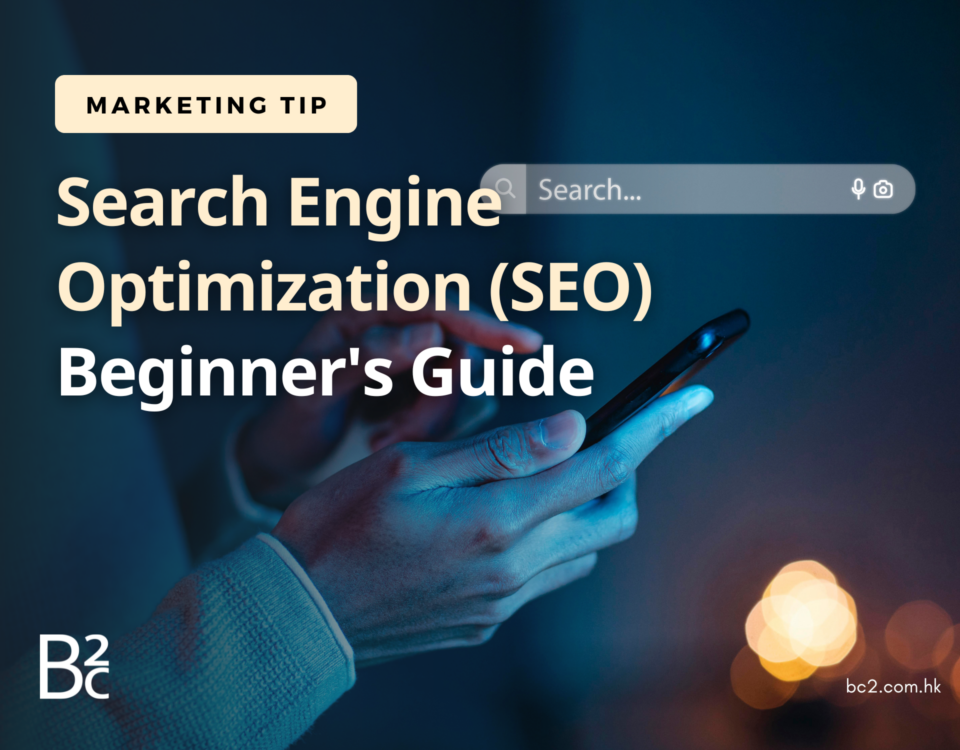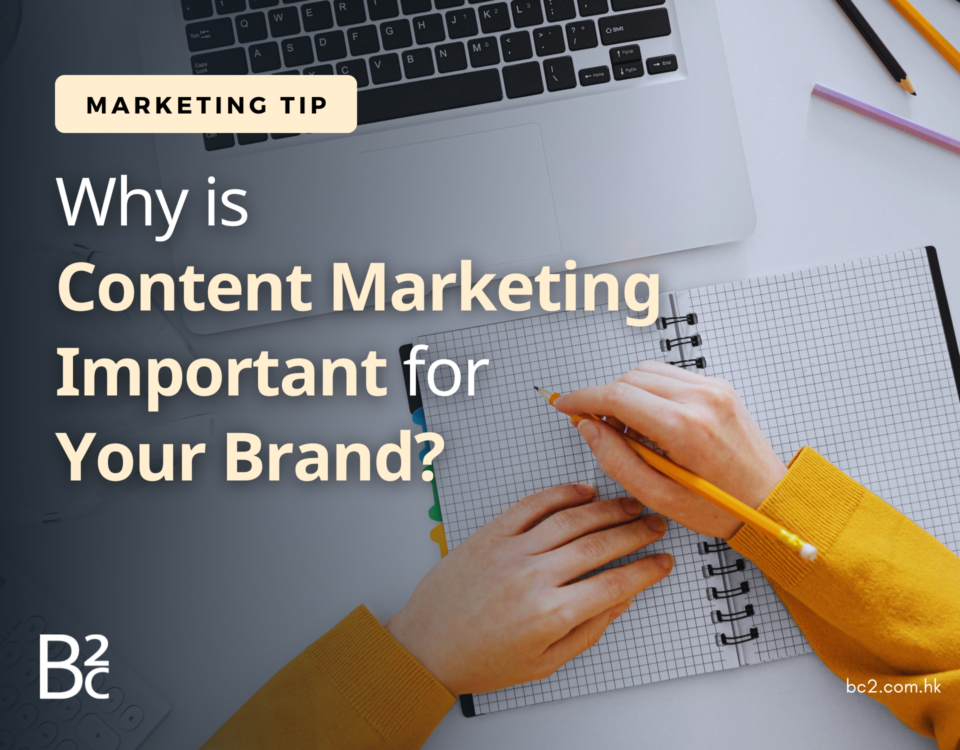


Starting from Scratch: How to Successfully Enter the E-commerce Industry – Part 2
December 1, 2023


Step-by-Step Guide: How to Set Up Google Ads (Basic Concepts)
January 10, 2024Google Ads vs. Facebook Ads: Which is more suitable for your business?
In today’s digital age, advertising has become an integral part of brand and product promotion for businesses. With the rise of online advertising platforms, Google Ads and Facebook Ads have become preferred tools for many companies. While these two advertising forms have distinct characteristics, which one is more suitable for your business? In this article, we will compare the features, advantages, and application scenarios of Google Ads and Facebook Ads in-depth, helping you make more informed marketing decisions.
Google Ads
Google Ads, also known as Google Ads or Google AdWords, is Google’s advertising platform, primarily focused on search and display ads. These ad formats appear on Google search result pages and partner websites. Here are the key features of Google Ads:
High Precision in Advertising:
- Proactive nature of search: Google Ads is based on user-initiated searches. When users enter relevant keywords into the Google search bar, they express their need or interest in specific information or products. This results in ads being presented directly to users actively seeking relevant content, increasing click-through and conversion rates.
- Keyword ad matching: Google Ads typically employs keyword ad matching to ensure ads are displayed only in search results relevant to them. Advertisers can choose which keywords trigger their ads, allowing for precise targeting of the intended audience.
- Targeted audience: Google Ads allows advertisers to target specific audiences based on factors like location, language, device type, and even user interests and behavior. This enables advertisers to finely define the audience for their ads, ensuring they are shown to users most likely interested in their content.
- Fine-grained control over ad delivery: Advertisers can control the delivery of ads based on factors like budget, bidding, and ad scheduling. This flexibility allows advertisers to adjust their advertising strategy, ensuring ads are displayed at the most suitable times and places.
Trackable Advertising Performance:
- Integration with Google Analytics: Integration between Google Ads and Google Analytics is crucial. By adding Google Analytics tracking code to Google Ads, advertisers can correlate ad data with website traffic and conversion data, providing a comprehensive understanding of how ads impact visitor behavior.
- Conversion tracking: In Google Ads, advertisers can set up conversion tracking to monitor the completion of specific goals, such as form submissions or checkout processes. This allows advertisers to assess the actual value of ads beyond just click-through rates.
- Google Ads reports: The Google Ads platform itself offers various reports, including click counts, impressions, and conversion data. Advertisers can use these reports to evaluate ad performance and optimize their strategies based on the data.
- Keyword tracking in Google Ads: With Google Ads’ keyword tracking feature, advertisers can identify which keywords generate the most clicks and conversions. This helps adjust the use of keywords in ads to improve effectiveness.
- Event tracking in Google Analytics: In Google Analytics, advertisers can set up event tracking to monitor specific actions, such as button clicks or video plays. This aids in a more detailed understanding of user interactions with the website, facilitating ad strategy optimization.
Support for Multiple Ad Formats:
- Search Ads: These ads appear on Google search result pages, typically at the top or bottom of the results. Search ads are triggered by specific search terms, with advertisers bidding to ensure their ads are displayed in relevant searches.
- Display Ads: Display ads appear in image or video format across Google’s display network, which includes thousands of websites and applications. Ads can be targeted based on user interests and behavior.
- Video Ads: Video ads are displayed in video format on YouTube and other partner websites. Advertisers can choose to show ads before, during, or after specific YouTube videos.
- App Ads: Targeted at app developers, these ads aim to increase app downloads from the Google Play Store or Apple App Store. Ads are displayed in search results and related app pages.
- Shopping Ads: These ads are displayed on Google Shopping search result pages, typically featuring product images, prices, and merchant information. Shopping ads can be seen on Google Shopping, Google Search, and partner websites.
- Local Services Ads: Targeting businesses providing local services, these ads appear at the top of search result pages, highlighting the business’s location, ratings, and services.
- Discovery Ads: Displayed in image and video format across the Google Discovery feed, including Gmail, YouTube, and the Google Discover page.
Wide-reaching Audience:
- Leading position in global search engines: Google is one of the world’s largest search engines, processing billions of search queries daily. This means advertisers can reach a vast audience globally through Google Ads.
- Google Ads Network: Google’s ad network includes thousands of websites, applications, and platforms, allowing ads to be displayed across various content and scenarios, expanding the reach of ads.
- User targeting and ad delivery: Google Ads enables highly precise user targeting based on user search history, interests, and behavior. This allows ads to be more accurately delivered to the intended audience.
- Different devices and platforms: Google Ads spans various devices, including desktops, tablets, and mobile devices. Additionally, ads can be displayed on various Google platforms such as Google Search, YouTube, and Gmail.


Facebook Ads (Facebook Meta)
Facebook Ads are social ads conducted through the Facebook platform, primarily displayed on Facebook and Instagram. Here are the key features of Facebook Ads:
Social Interaction:
- Building brand reputation: Through Facebook Ads, brands can directly interact with users, responding to their comments and inquiries. This direct interaction helps build a positive brand image, increasing trust and reputation.
- Broadening brand awareness: Facebook’s ad platform has a massive user base, allowing ads to be displayed to a wide audience. User interactions and shares can spread ad content to a broader social network, further increasing brand awareness.
- Increasing user engagement: Engaging and captivating ad content can pique user interest and involvement. Users can like, comment, and share ads, enhancing the impact of ads and making them more memorable and accepted.
- Precise ad targeting: The Facebook Ads platform allows advertisers to perform highly precise ad targeting based on user demographics, interests, behavior, and more. This means ads are more likely to be shown to potential customers interested in the product or service.
- Word-of-mouth effect through social sharing: User interactions, especially sharing ads, can recommend ad content to friends and followers. This word-of-mouth effect helps increase trust among potential customers, making brand messages more persuasive.
- Direct user feedback: User comments and reviews provide valuable direct feedback. Advertisers can understand user opinions, needs, and concerns, aiding in adjusting marketing strategies and product positioning.
- Increased conversion rates: Due to the social elements of Facebook Ads, when users see friends interacting with a brand or product, they are more likely to develop trust, leading to higher click-through and conversion rates.
Precise Customer Targeting:
- Basic targeting: Basic targeting allows advertisers to choose the basic criteria for targeting ads, such as location, gender, and age. This is the most fundamental form of ad targeting, ensuring ads are shown to users who meet basic criteria.
- Interests and behavior: Facebook allows advertisers to target ads based on user interests and behavior. Advertisers can select specific interests, preferences, and purchasing behaviors to ensure ads are displayed to users interested in relevant topics.
- Demographic targeting: In addition to basic criteria, advertisers can target users based on demographic information, including education level, job occupation, and family status. This helps more accurately identify the target audience.
- Custom audiences: Advertisers can use their own customer data, such as email lists or website visitors, to create custom audiences. This facilitates precise remarketing or expands similar audiences based on existing customers.
- Lookalike audiences: Building on existing custom audiences, Facebook can generate lookalike audiences—people with similar characteristics and behaviors. This broadens the potential reach of ads while ensuring they are shown to users likely interested in the brand.
- Mobile devices and connection status: Advertisers can choose the type of device for ad display (e.g., mobile or desktop) and the user’s connection status (e.g., Wi-Fi connection). This helps achieve the desired effect of ads more effectively.
- Time targeting: Advertisers can set specific time periods for ad display to ensure ads are shown at times most likely to capture user attention.
Diverse Ad Formats:
- Image Ads: One of the most basic ad formats, advertisers can use a single image or a carousel of images to showcase their products, services, or brand.
- Video Ads: Advertisers can use videos to display content, helping attract more attention and convey richer information. Facebook supports autoplay videos in ads.
- Carousel Ads: This ad format combines images and text to tell a brand story or highlight product features.
- Collection Ads: Collection ads allow advertisers to simultaneously showcase multiple products from their catalog. When users click on the ad, they are taken to a full-screen shopping experience page.
- Dynamic Ads: This ad format displays personalized products or services based on users’ previous interactions with a website or app, delivering a personalized experience.
- Lead Ads: Specifically designed for collecting potential customer information. Users can directly fill out forms within the ad, providing contact details to express interest in a product or service.
- App Install Ads: Suitable for promoting apps, allowing users to download and install the app directly from the Facebook ad.
- Event Response Ads: Used to promote events, allowing users to respond, participate, and share information about the event on Facebook.
- Brand Awareness Ads: Designed to increase brand awareness, typically presented in image or video format, emphasizing the core values and image of the brand.
- Instant Experience Ads: Allow advertisers to transform instant articles into ads, providing more content and interaction options.
Brand Building:
- Due to the display of Facebook Ads on social platforms, they contribute to brand building and enhancing brand image. Interactive ad formats make it easier for users to establish an emotional connection with the brand.
| Google Ads | Facebook Ads | |
Primary Ad Formats |
|
|
Target Audience | Actively searching for information using “keywords” |
|
Level of Interaction | Can only click on the ad | Besides clicking, can also like, comment, message, etc. |
Purpose |
|
|
Cost | Relatively low (charged only for clicks) | Relatively high (charges for both impressions and clicks) |
Conclusion
When choosing between Google Ads and Facebook Ads, the decision should be based on your business characteristics and marketing objectives. If your goal is to display ads when users actively search and achieve more precise advertising results, Google Ads may be the better choice. Conversely, if you want to build brand image, increase awareness through social platforms, and engage more with users, Facebook Ads might be more suitable.
In practical applications, many businesses also adopt a combination of Google Ads and Facebook Ads to leverage their respective advantages, achieving a more comprehensive marketing effect. Ultimately, a successful advertising strategy should be based on a deep understanding of your target customers, business needs, and budget. Regardless of the chosen advertising platform, continuous monitoring of ad performance and optimization are key to ensuring marketing success.



